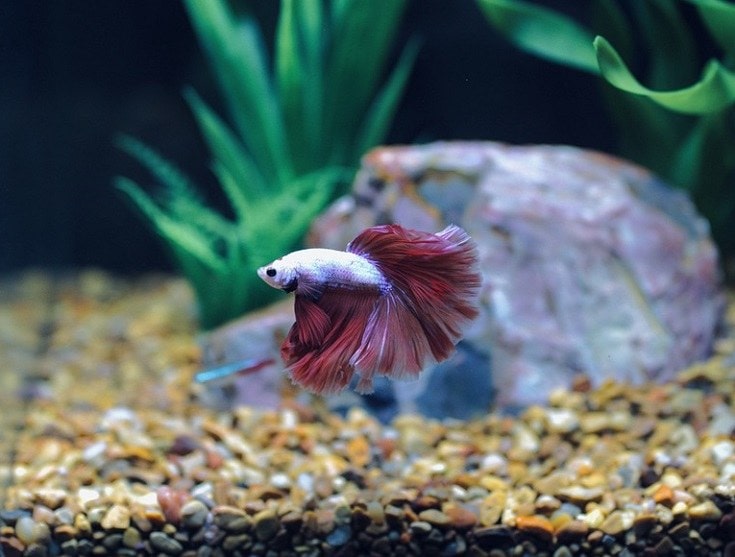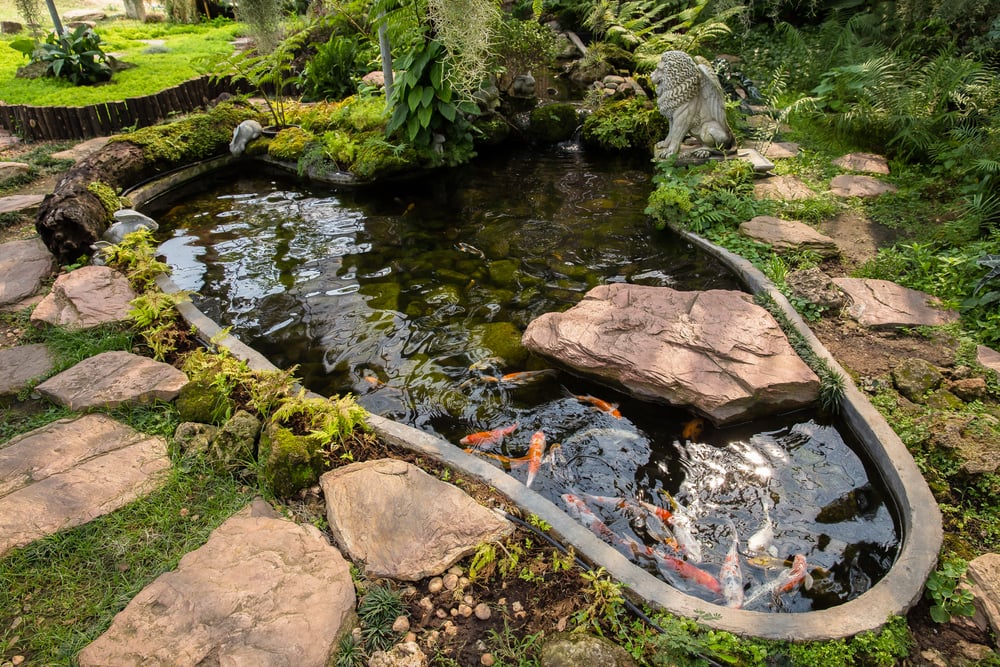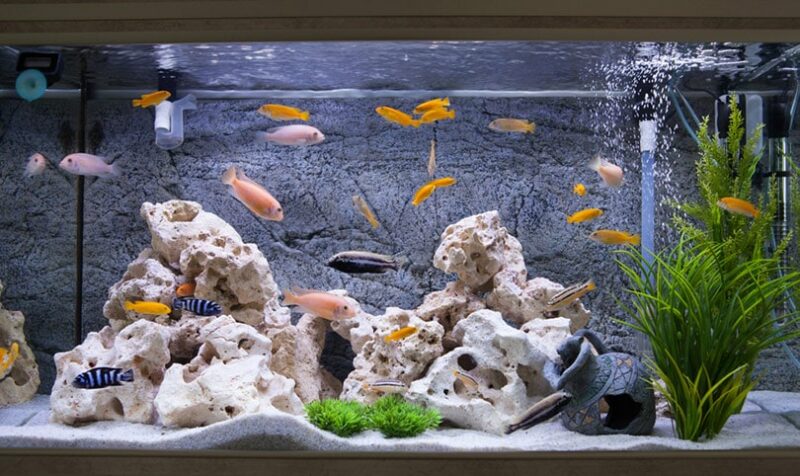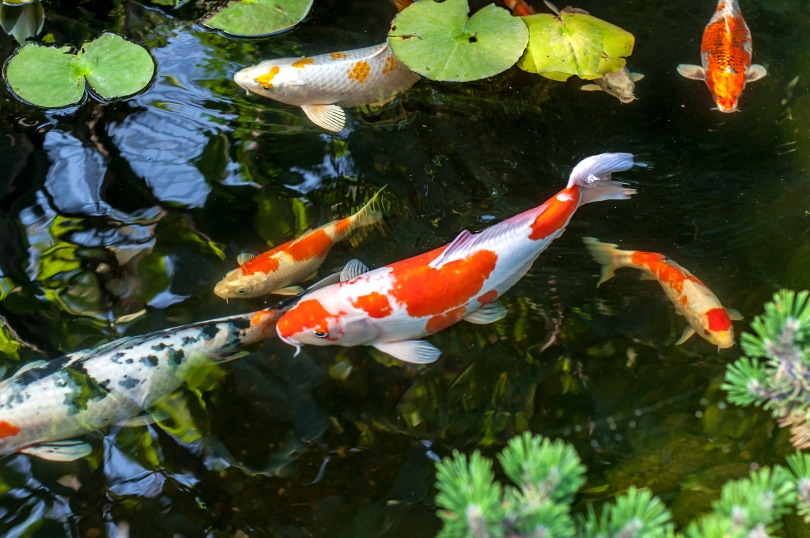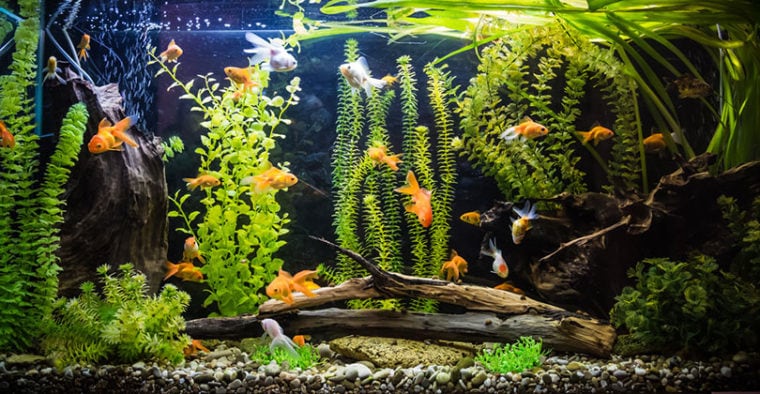
Aquariums can be a blast, but sometimes you want something different than just fish. If you’re stumped on what else you can add to your aquarium, we’ve put together a list of other aquatic animals you could be keeping. Some can be kept in conjunction with your fish, while others may need to be kept alone. There is something on this list for everyone, no matter what type of tank you keep.
Living Things You Can Add to Your Tank Besides Fish
1. Snails

| Tank type: | Freshwater, saltwater, brackish |
| Size: | 0.5–4 inches |
| Food requirements: | Herbivorous, omnivorous |
Snails are some of the most popular and easy to care for animals you can add to your aquarium. There are a variety of snails available in the aquatics trade, no matter what type of tank you’re keeping. Snails come in a variety of shapes and sizes, and they can bring a multitude of benefits to your tank.
Most people think of snails as algae eaters, but many snails cannot subsist on a diet of exclusively algae. They will, however, often eat detritus and waste from your tank floor, helping to keep things clean in the process.
2. Axolotls

| Tank type: | Freshwater |
| Size: | 12 inches |
| Food requirements: | Carnivorous |
Axolotls have seen a spike in interest in the last few years, but these fascinating creatures have been members of the aquatics community for decades. They are an endangered species considered functionally extinct in the wild, but captive-bred Axolotls aren’t generally hard to come by, although they aren’t legal to keep in all areas.
These unique amphibians spend their entire lives in a juvenile state, and they stay full aquatic throughout their lives. They have specific care needs and are not suitable for everyone, but they can make great pets and can live long lives with proper care. It’s generally not recommended to keep Axies with other animals, though.
3. Shrimps

| Tank type: | Freshwater, saltwater |
| Size: | 1–6 inches |
| Food requirements: | Omnivorous, filter feeders |
Shrimps are one of the best things you can add to your tank if you’re in the market for hard workers. These invertebrates will often work tirelessly to clean the surfaces in your tank. The exception to this is filter-feeding shrimps, who will work tirelessly to remove free-floating food particles and small creatures from the water column.
These animals are widely available, and there are species that are appropriate for freshwater and saltwater tanks. Some of them will reproduce readily, allowing you to always have a population of them.
4. Crabs

| Tank type: | Freshwater, saltwater |
| Size: | 0.5–5 inches |
| Food requirements: | Omnivorous |
Crabs are a quintessential sight on just about any beach, but did you know that you can buy them for your aquarium as well? There are not a huge number of crabs in the aquatics market, but they can be a blast to keep. There are freshwater and saltwater crabs on the market, so you can have crabs no matter what kind of tank you have.
Some crabs are semi-terrestrial, so make sure to read up on the care needs of any crabs before bringing them home. They are typically scavengers, but some larger crabs may catch and eat their tank mates.
5. Corals

| Tank type: | Saltwater |
| Size: | 1–72 inches |
| Food requirements: | Omnivorous |
Corals are beautiful creatures that come in tons of varieties. They are available in bright colors, unique shapes, and a huge variety of sizes from only a few inches all the way up to 6 feet. They can live for decades, with some corals living for hundreds of years.
They can be difficult to keep and have very specific care needs. It’s extremely important to ensure you have a proper reef setup before you attempt to bring any corals home. It’s also important to select corals that will be well-suited to your tank size.
6. Anemones

| Tank type: | Saltwater |
| Size: | 6–78 inches |
| Food requirements: | Carnivorous, omnivorous |
Anemones are interesting animals that come in a huge variety of colors and shapes, much like corals. They have specific care needs and some species can be difficult to keep, so research is essential before bringing any anemones home.
Some species of anemones can get exceptionally large, and some are quite aggressive—so aggressive, in fact, that some species should be kept in species-only tanks. Anemones are often coupled with clownfish, which are naturally resistant to the toxins produced by anemones.
7. Starfish

| Tank type: | Saltwater |
| Size: | 4–14 inches |
| Food requirements: | Omnivorous |
Starfish are easily one of the most recognizable aquatic species due to their distinct star shape. They are commonly kept in home saltwater aquariums, but many people underestimate just how much trouble these strange animals can get into. Starfish are true omnivores and may consume slower tank mates, so tank mates should be selected carefully.
They come in a broad range of sizes, so make sure you choose starfish that are compatible with the size of your tank. Some species may be appropriate for medium tanks, while others need large or extra-large tanks. Generally, starfish are not suitable for nano tanks.
8. Frogs and Toads

| Tank type: | Freshwater |
| Size: | 2–2.5 inches |
| Food requirements: | Carnivorous |
Frogs and toads are fun animals that we frequently see on land. There are a few species that spend all or most of their time in the water and can be kept in aquariums, though. African Clawed frogs have cute but derpy faces that can really appeal to your heart. Fire-Bellied toads are a very popular semi-aquatic species that many people keep as well, although they do need access to land.
These amphibians aren’t suitable for just any tank environment since they may eat tank mates, and some are even known to attempt to eat tank décor. Make sure you have a safe and suitable setup for a frog or toad before adding them to your tank.
9. Clams

| Tank type: | Freshwater, saltwater |
| Size: | 1–48 inches |
| Food requirements: | Filter feeders |
When you think of clams, you likely think of saltwater clams. There are freshwater clams that can be kept in home aquariums, though! Clams can be a great addition to your tank because they are filter feeders. When they filter feed, they remove particles from the water column, enhancing the clarity of the water and helping to improve overall water quality.
Many people are underprepared for meeting the needs of clams before adding them to their aquarium, though. It’s important that you have a proper water flow and that you ensure your clams have plenty to eat in the water column.
10. Crayfish
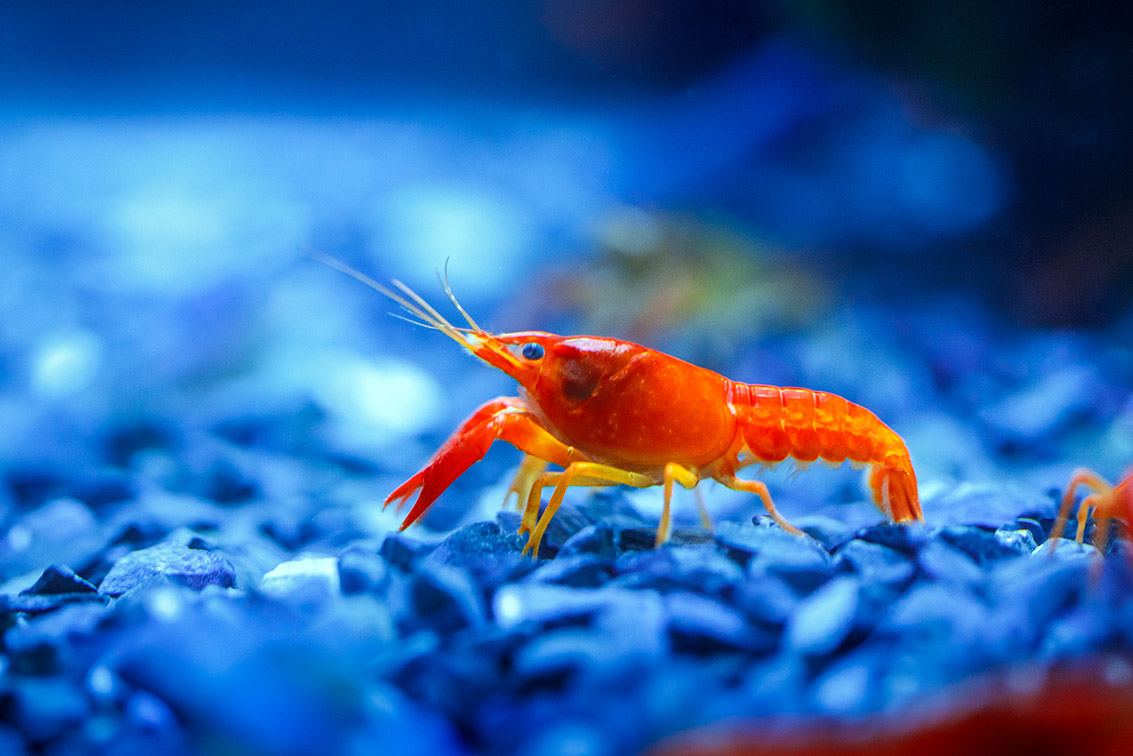
| Tank type: | Freshwater |
| Size: | 2–8 inches |
| Food requirements: | Omnivores |
Crayfish are interesting invertebrates that look similar to large shrimps. However, they often have unpleasant temperaments that can make them a poor fit for community tanks. Crayfish will often eat anything they can catch, but many of them move slowly enough that your fast-moving fish and other invertebrates will be at low risk. Sick and slow-moving animals are fair game for the grumpy crayfish, though!
11. Plants

| Tank type: | Freshwater, saltwater, brackish |
| Size: | 2–72 inches |
| Food requirements: | NA |
Technically, plants are living things! Aquatic plants can be a fantastic addition to just about any aquarium due to their ability to improve water quality. They can also serve as a source of food and protection for your aquarium’s inhabitants. There are hundreds of aquatic plants that you could keep in your aquarium, so you need to choose what kind of look you’re going for and then find plants that match your aesthetic and the parameters of your tank.
Conclusion
There are plenty of great options when it comes to choosing living things for your aquarium other than just fish. Some of these things shouldn’t be kept with other animals, but many of them are suitable for community or reef tanks. Make sure to thoroughly research the needs and temperament of anything you choose to add to your tank to ensure it will fit in with the things already living in the tank.
Featured Image Credit: S-F, Shutterstock

